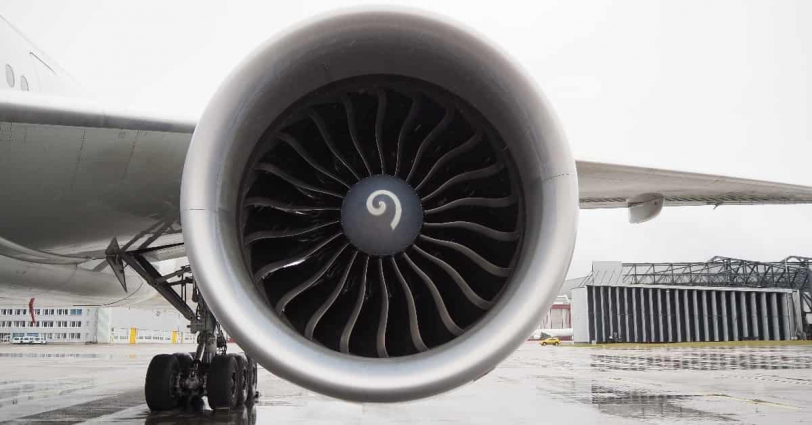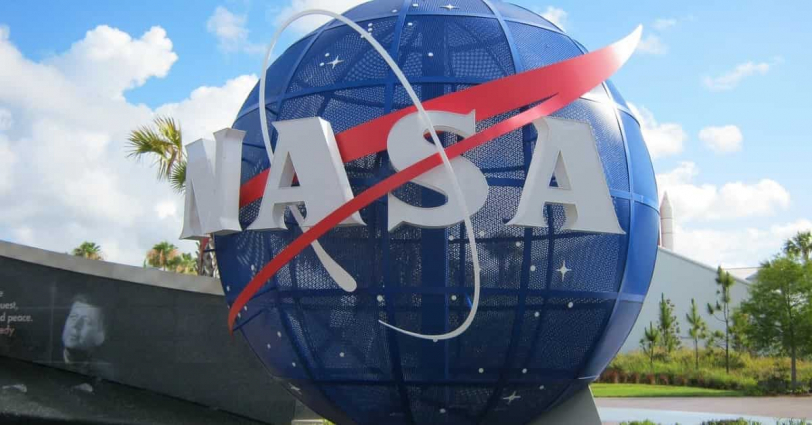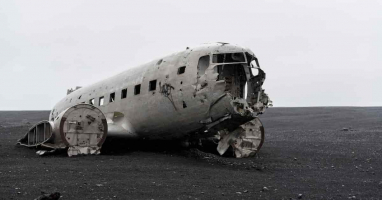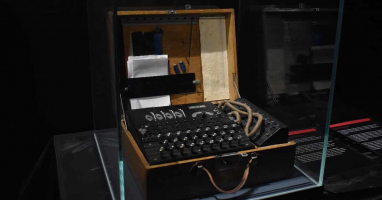I wrote this article in Japanese and translated it into English using ChatGPT. I also used ChatGPT to create the English article title. I did my best to correct any translation mistakes, but please let me know if you find any errors. By the way, I did not use ChatGPT when writing the Japanese article. The entire article was written from scratch by me, Saikawa Goto.
Introduction
Movies and books covered in this article
Three takeaways from this article
- Honda Motor achieved a miracle by discovering aviation theory that even NASA did not understand.
- The struggles that followed the successful flight testing of the prototype.
- The unique corporate culture of “Honda Motor” that amazed even the global company GE.
Self-introduction article


Published Kindle books(Free on Kindle Unlimited)
“The genius Einstein: An easy-to-understand book about interesting science advances that is not too simple based on his life and discoveries: Theory of Relativity, Cosmology and Quantum Theory”
“Why is “lack of imagination” called “communication skills”?: Japanese-specific”negative” communication”
The quotes in the article were translated using ChatGPT from Japanese books, and are not direct quotes from the foreign language original books, even if they exist.
How was the “HondaJet” Born? A Look into Revolutionary Technological Innovation and Honda’s Bold Decision-Making
The “Engine on the Wing” Concept that was Evaluated as an Innovative Proposal in the History of Aviation
In 2015, Honda’s small business jet, the “HondaJet,” began operation. It was highly regarded not only as a business aircraft, but also for its sales success, with 100 units sold on the first day and subsequently achieving the highest number of shipments in the world. However, the most innovative aspect of this “HondaJet” lies in its engine design.

The engine of the “HondaJet” is located on top of the wing.

In general, the engine of a business jet is mounted on the side of the fuselage. However, Honda discovered through various challenges that it was more efficient to mount the engine on top of the wing. This led to the practical application of the world’s first “engine on top of the wing”.

This invention is praised as “an innovative idea in the history of aviation”, and has received unparalleled recognition in the aviation industry.
No one, even among the researchers and engineers of aviation advanced countries in Europe and America, has ever won these three awards at the same time. The fact that Fujino, the design and development leader of HondaJet, has won all these prestigious awards undoubtedly means that the world has recognized and highly valued his achievements.

However, it seems that this design is truly delicate.
In the actual HondaJet aircraft, even a slight difference of a few tens or even a few centimeters in the position of the engines on the wings can result in completely different interference drag. They really have to search for the optimal position down to the smallest detail to reduce resistance.
The idea of simply “placing the engine on top of the wing” was not the sole factor that led to its realization.

First of all, how far-fetched is this idea? Here’s a sentence that gives you a sense of it.
It’s better not to present it. Even NASA, after conducting various studies, still doesn’t understand this kind of thing. If it’s criticized as ‘this won’t work’ after being announced, your life as an aircraft designer is over. Of course, there’s also a possibility that the future of HondaJet could disappear.

“This kind of thing” is to reduce wave drag during high-speed flight by placing the engines in the optimal position relative to the wings. NASA doesn’t even fully understand this theory, which means that no aircraft manufacturer in the world knows it either. And yet, HONDA has created such an incredible theory and practical aircraft.

What’s surprising is that it was achieved by HONDA, a car manufacturer, not an aircraft manufacturer. It’s an incredible feat that aircraft manufacturers would find hard to believe.
The “HondaJet” project began in 1986, just three years after project leader Fujino joined the company. Fujino was suddenly ordered to “build an aircraft,” and the development was kept top secret within the company. Eventually, in 2003, they succeeded in making the first flight. However, at the beginning of development, the situation was as follows.
No one on the team had ever designed or built an aircraft before.

Such HONDA is now the one and only.
Looking around the world, there are no major manufacturers who develop and produce both the aircraft and jet engines in-house.
Despite being in a completely different industry, HONDA has climbed to a level of being an unmatched entity in the field of aviation, which has a high entry barrier. This shows the amazing technology of “HONDA” that no one can imitate.

I felt a sense of relief that we had finally succeeded in the first flight, but at the same time, the thought that this might be the end of Honda’s small aircraft development projects came to the forefront of my mind, and I felt anxious about the future.
These were Fujino’s impressions immediately after the prototype’s flight was successful. Do you understand the meaning at first glance? I couldn’t imagine why there was anxiety about the future despite completing the prototype.
This is related to the unique circumstances of the aviation industry.

Unlike electronic products and motorcycles, aircraft require maintenance and after-sales service even after they are sold. This means that not only making aircraft, but also preparing for maintenance and after-sales service is essential. Of course, if they are going to mass-produce, they need to build a new factory. However, the sales of small jets are affected by economic fluctuations, and the number of shipments is overwhelmingly smaller than that of cars. Therefore, even if they build a factory and establish a mass production system, it is uncertain if it will be a viable business.
Even if it costs a huge amount of money to develop a prototype, we can end the expenditure at that point. However, when it comes to business development and mass production and sales, it’s not that simple.
That’s exactly right. After the first flight, they told the media:
This is a prototype and we don’t have a business plan. It’s just the first flight to verify the technology, and we will continue flight tests in the future.
They made it clear that they weren’t looking to develop it as a business.

The top management also seemed to have been quite troubled by this business decision. In this book, expressions like the following can be found throughout.
Even the company’s top executives had difficulty making a decision, and were leaning towards canceling the development project.

While project leader Fujino succeeded in the development, it would take a considerable amount of time to move on to the next step of “turning the small jet plane into a business.”
It’s not hard to see why they were so cautious. After all, even world-renowned jet engine companies have gone bankrupt in this industry.
In the 1970s, one of the world’s top three jet engine manufacturers, Rolls-Royce, also suffered from a slump in the development of large engines and went bankrupt, resulting in nationalization and reconstruction.
It’s possible for a world-renowned giant corporation to go bankrupt due to the failure of developing one aircraft or jet engine or a business. After all, the development cost of the new Boeing 787, which was introduced to the market several years ago, has reached as high as 1.8 trillion yen. There are no other industrial products that require such high risks and enormous development costs assuming mass production.

In this tough world, is it necessary to enter from a completely different industry? It’s understandable to have second thoughts.
There are also concerns like this.
If accidents or loss of life occur after being released in America, it could damage the reputation of motorcycles and cars that make up the overwhelming majority of sales, causing significant damage to sales. Shouldn’t we stop at the prototype stage?
Certainly, that’s a valid point. If they were to have fatalities in the business of small jet aircraft that they don’t even know will get on the right track or not, it could affect the sales of Honda’s motorcycles and cars. Is it worth taking that risk and getting into the business?

During the time before the company made its decision, Fujino was greatly troubled.
For about a year and a half, while unable to see the future and while putting together specific plans based on a new concept, I went through the most difficult period of my life, unlike any of the challenges I had faced before. I didn’t receive any support, and at one point, I even considered quitting the company altogether. I thought and worried about many things.
It’s understandable. After successfully completing the maiden flight, the project was downsized, and many of the project members were transferred. Fujino himself spent his days continuing to collect experimental data. With no progress in commercializing the project, Fujino was approached with offers from other companies and wavered. However, he kept finding opportunities to appeal and finally, the president made the decision to steer the project toward commercialization.

Technology Development and Industrialization Made Possible Precisely Because of “HONDA”
After deciding to commercialize, HONDA teamed up with GE. However, as Fujino explains:
“There is no other company in the world besides HONDA where this kind of approach is accepted,” GE said a lot.
This shows that HONDA has a completely different corporate culture from the norm.

Honda’s founder, Soichiro Honda, played a significant role in this.
As early as 1962, Honda had already mentioned the development and production of aircraft in a company newsletter.
In June of that year, Soichiro informed all employees that the company was going to develop and produce a light aircraft that was easy to handle and affordable for everyone to fly.

Honda Soichiro himself had a dream of aviation. Fujino also has the following thoughts on the company name “Honda Motor.”

Every top executive has said, “HONDA is a personal mobility company.” That’s why I think we’ve been saying “HONDA GIKEN KOUGYOU” instead of “HONDA JIDOUSHA.” We, the employees, also think that HONDA is a company that pursues personal mobility broadly, rather than just an automobile company. (The company “Honda Motor” is called “HONDA GIKEN KOUGYOU” in Japan, and literally translated as “HONDA Technology Research Industry.” By the way, “JIDOUSHA” means “MOTOR (CAR).”)

He made his case to the top executives and won approval to proceed with the project.
However, there were various obstacles to developing aircraft in Japan. In addition to the huge development costs and the inability to allocate resources to aircraft during a period of increasing demand for automobiles in Japan, there were also the following circumstances.
Furthermore, both the Ministry of International Trade and Industry and the Ministry of Finance were haunted by the trauma of the failed YS-11 along with the manufacturers, and as a result, they were not in step with each other.
The YS-11 is Japan’s first domestically produced passenger plane. The memory of the YS-11, which did not go well for various reasons, had made Japan hesitant about aircraft development.

Fujino was looking for a job at a time when the memories of the YS-11 failure were strong, and he said the following:
Even if I got a job at a major Japanese aircraft manufacturer, I wouldn’t find it attractive if I had to settle for things like license production of U.S. military aircraft or joint development with Boeing. I thought I wouldn’t be able to do dynamic work, so I didn’t hesitate to join an automotive company.
It may be said that this project was completed thanks to such Fujino, who had a passion for aircraft but joined HONDA because he thought he would not be able to do a big job in Japan.

Additionally, the fact that Honda has many presidents who come from a background in engineering had a big impact. The 6th president, Fukui Takeo, was also from an engineering background.
After taking over as the 6th president, Fukui Takeo pushed for the development of the HondaJet. Eventually, he would be faced with the difficult decision of whether or not to commercialize it. He, too, was an avid racing fan. Without someone with such qualities serving as president throughout the 20 years of hesitation and indecision from the development to commercialization of the HondaJet, which involved significant risks, it would have been unbearable.


Certainly, there are things that can be understood only because they are engineers. Only because engineers’ convictions and beliefs, which cannot be judged by budgets and balance sheets alone, are alive and well at the top, can challenging things be done.
Also, it was possible for the president who came from an engineering background to share the following sense.
We can’t be stingy with money for research and development.
I feel that this stance is what supports “HONDA which has a reputation for technology”.

Why was Fujino able to Take on Challenges that Go Against Common Sense in the Aviation Industry?
The pitching moment is affected by the separation of air, and the basic thinking of those who design wings or airplanes is to minimize the separation of airflow. However, upon deeper reflection, is avoiding separation of airflow really the top priority? Of course, it is desirable to keep separation of airflow to a minimum, but if there is little penalty on the actual aircraft when separation occurs, could we actually use separation to effectively reduce the pitching moment? Fujino focused on this point.
We have discovered that we can further reduce resistance not by minimizing aerodynamic interaction, but rather by using this interaction to our advantage and reducing resistance even more.
Even though this technical content may not be fully understood, from these descriptions, it would be clear that Fujino “disrupted the ‘common sense’ of the aviation industry and created new discoveries.”

Here we can see that Fujino’s exceptional sense, talent, and hard work are obviously involved, but there are other factors at play as well.
In fact, the basic design concept of these aircraft is an extension of the 60s and 70s, with the basic shape and overall configuration remaining unchanged, with the engines attached to the side of the fuselage. It is not that they have outstanding performance or use innovative technology.

Certainly, the shape of airplanes has been determined for a long time, and even in this book, it is written as follows:
99% of the shape of the aircraft is determined by function.
Moreover, due to high entry barriers, only a few companies can produce them. This suggests that because of such circumstances, the idea of “pursuing better ideas” may not arise.

Furthermore, there is also such a problem.

What I found most difficult was not only the fact that it takes 10 to 20 years to study these specialized fields, but also that studying itself becomes the job as they continue to study the field for a long time. Rather than coming up with new ideas, they end up criticizing designs based on papers or theories they have read and learned before, or teaching others what they have learned. It’s like becoming a critic, being stuck with fixed ideas such as “this has already been tested at NASA and failed, so it’s no good,” and thinking that airplanes are supposed to be like this. It’s a scary thing.

Aircraft are all about “flying safely,” and there are many things that need to be learned for that purpose. That’s why as one learns these things, they can become like “absolute truths” to them. This would be a problem unique to fields that take a long time to master.
That’s why new companies like HONDA, which have no experience in the field, could still compete using a straightforward approach of “breaking through with technology.”
Fujino understood these things and had a clear vision for the “HondaJet” project from the beginning. However, it was not easily accepted.

HondaJet incorporates many cutting-edge technologies, and its purpose, technical value, and position in the small business jet industry are not easily understood by both immediate supervisors and colleagues. Therefore, various opinions arose within the team, leading to heated arguments for a year and a half to two years after the management meeting.
Nonetheless, Fujino appealed as follow and clearly showed the direction they should take.
Does it make sense for HONDA, which is about to enter the market, to make something similar to what other manufacturers have made?

Furthermore, Fujino had been committed to commercializing the “HondaJet” from the beginning.
Because he couldn’t feel a sense of accomplishment for his long-time desire to “develop something that is useful to people and used by them.” It was his determination at the time that “if we are going to do aircraft, we must definitely take it to the point of sale and see it through to the end.”
And that’s why he prioritized commercialization above all else. While he was willing to take on technical challenges, he would give up those challenges if he believed they would hinder commercialization. It was this sense of balance that enabled him to lead the project to its successful conclusion.

I hope you will read the record of the struggles of such Fujino and the other project members.
Conclusion
After reading this book, I was reminded that “overwhelming technology” is one “story.” The reason why we are so moved by a single company’s development story is because we have respect for technology and for those who face technology.
This is a huge project that could not have been accomplished by technology alone, but there is no doubt that it is a historical achievement that lives up to the name of “Honda of Technology.” I hope you will experience this magnificent story.

Published Kindle books(Free on Kindle Unlimited)
“The genius Einstein: An easy-to-understand book about interesting science advances that is not too simple based on his life and discoveries: Theory of Relativity, Cosmology and Quantum Theory”
“Why is “lack of imagination” called “communication skills”?: Japanese-specific”negative” communication”








コメント